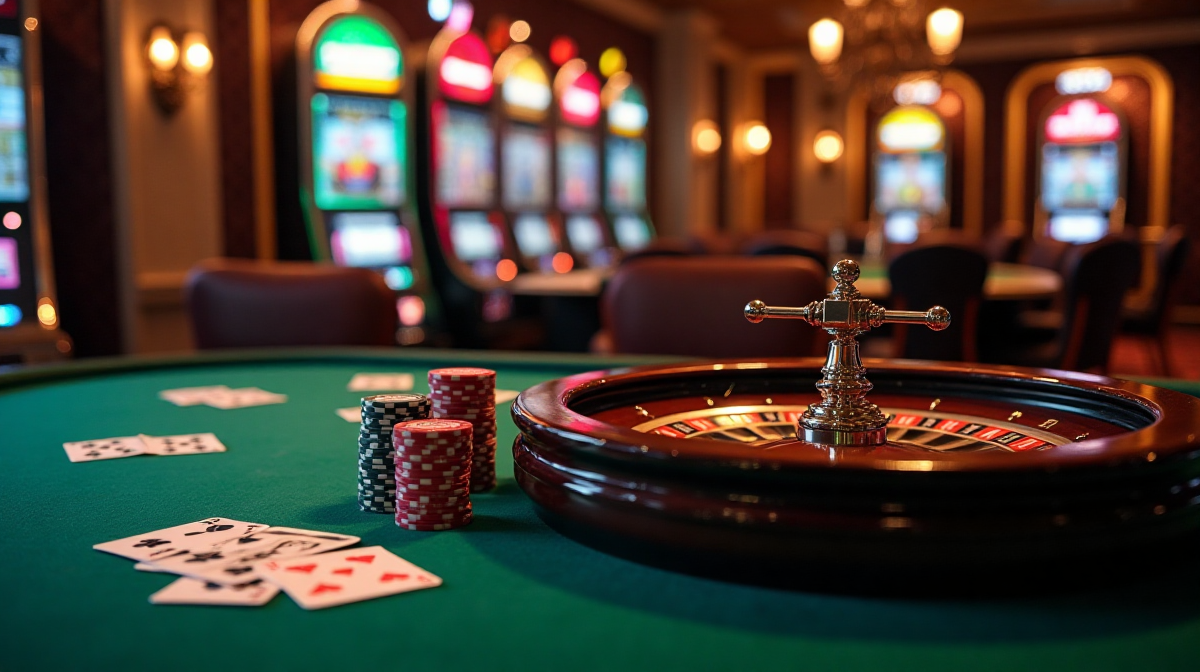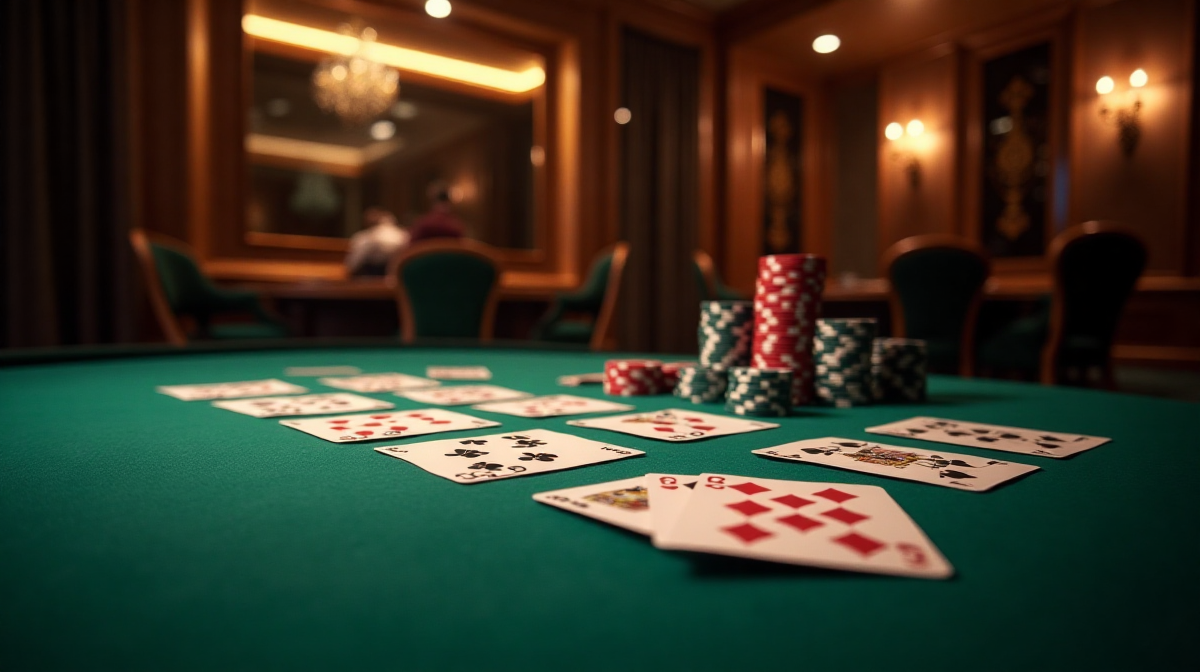Poker Face Masterclass: 5 Ways to Stay Cool
Mastering the art of maintaining composure, often referred to as a “poker face,” is a skill that extends far beyond the felt tables of a casino. It's about control, strategy, and understanding human psychology. This article will delve into five actionable ways to cultivate this valuable ability. Understanding your bet number and staying calm under pressure are critical, whether you’re negotiating a business deal or simply navigating a challenging conversation.
Why Mastering a Poker Face Matters
The benefits of a strong poker face aren’t limited to gambling. In negotiations, it prevents you from revealing your bottom line. In personal relationships, it allows you to navigate difficult conversations with grace. Even in everyday interactions, the ability to remain neutral can project confidence and trustworthiness. Learning to effectively manage your expressions can improve your influence and overall success in various aspects of life. Knowing your bet number tomorrow doesn’t guarantee success, but a cool head certainly increases your odds.
Debunking Myths About Poker Faces
A common misconception is that a poker face means displaying no emotion. This isn't true. It’s about controlling your emotional expressions. A completely blank stare can be just as revealing as an over-the-top reaction. The goal is to mask the strength of your hand – or your true feelings – not to eliminate expression entirely. The ability to maintain a neutral demeanor, even when experiencing strong emotions, is the hallmark of a skilled poker player and a confident individual.
Setting the Stage – Understanding Tells & Reading Others
Before diving into techniques, it’s crucial to understand that everyone has tells – subconscious signals that betray their thoughts or feelings. These can be subtle changes in body language, facial expressions, or vocal tone. Learning to recognize tells in others can give you an advantage, but the primary focus should be on controlling your own.
Physiological Control - Mastering Your Body Language
Controlling your physical responses is the foundation of a strong poker face. When stressed, our bodies often react in predictable ways – increased heart rate, rapid breathing, tense muscles. Learning to manage these responses is key.
Heart Rate & Breathing Techniques
Diaphragmatic breathing – taking slow, deep breaths that expand your abdomen – can significantly lower your heart rate and calm your nervous system. Practice this technique regularly, even when you’re not under pressure, to make it a natural response.
Micro-expressions: What They Are & How to Minimize Them
Micro-expressions are fleeting, involuntary facial expressions that reveal true emotions. While difficult to completely eliminate, awareness is the first step. Pay attention to your facial muscles and consciously relax them.
Muscle Control: Practicing Neutral Facial Muscles
Regularly practice relaxing your facial muscles. Consciously soften your brow, unclench your jaw, and relax your eyes. This builds muscle memory and makes it easier to maintain a neutral expression. This is useful when considering your sporty bet account number and wanting to remain calm.
Posture & Body Positioning
Maintain a relaxed, confident posture. Avoid fidgeting, crossing your arms defensively, or slumping. A strong, open posture projects composure and control.

Emotional Regulation – Staying Grounded Under Pressure
Managing your emotions is crucial for maintaining a poker face. When feeling stressed or anxious, your emotions will inevitably leak through your body language and expressions.
Recognizing Your Trigger Responses
Identify what situations or stimuli trigger emotional reactions in you. Once you know your triggers, you can prepare for them and develop strategies to manage your responses.
Mindfulness & Present Moment Awareness
Staying anchored in the present moment helps to prevent your mind from racing and fueling emotional reactions. Focus on your senses – what you see, hear, feel – to ground yourself in the here and now.
Cognitive Reframing
Challenge negative thoughts and reframe them in a more positive or neutral light. This can help to reduce anxiety and maintain a calm perspective.
Detachment & Objective Observation
Try to view situations as an outsider, observing without judgment. This detachment can help you to remain emotionally neutral.
Strategic Thinking - Controlling Your Mental Narrative
Your internal dialogue plays a significant role in your emotional state. Controlling your thoughts can directly impact your ability to maintain a poker face. Understanding what is a poker face requires understanding the mental game.
Visualization Techniques
Practice visualizing yourself remaining calm and composed in stressful scenarios. This mental rehearsal can build confidence and prepare you for real-life situations.
The Power of Internal Dialogue
Replace negative self-talk with positive affirmations. Instead of thinking, I'm going to mess this up, tell yourself, I'm prepared, and I can handle this.
Focusing on Process, Not Outcome
Shift your attention from winning or losing to making optimal decisions. This reduces anxiety and allows you to focus on the task at hand.
Pre-game Mental Preparation
Before entering a stressful situation, take time to set intentions and build confidence. Remind yourself of your strengths and visualize success.
Distraction & Focus Techniques – Shifting Your Attention
Sometimes, the best way to maintain a poker face is to subtly shift your attention away from the source of stress.
Visual Anchors
Focus on a specific object or point in the room. This provides a subtle distraction and helps to ground you in the present moment.
Mental Math or Games
Engage your brain in a neutral task, such as mental math or a simple word game. This can help to divert your attention from stressful thoughts.
Subtle Physical Sensations
Focus on a minor physical sensation, such as your feet on the floor or the feeling of your clothes against your skin.
Controlled Blinking
Consciously control your blinking rate. A deliberate blink can provide a subtle reset and help you to refocus. A good poker player knows how to keep a poker face by using these techniques.

Practice & Application – Honing Your Skills
Mastering a poker face requires consistent practice and application.
Role-Playing Exercises
Practice with friends or family, simulating stressful scenarios. Ask for feedback on your body language and expressions.
Real-World Application
Observe yourself in everyday interactions. Pay attention to your reactions and identify areas for improvement.
Video Recording & Self-Analysis
Record yourself in simulated scenarios and analyze your body language and expressions. This provides valuable insights into your tells.
Seeking Feedback From Trusted Sources
Ask trusted friends or colleagues for objective feedback on your ability to maintain composure.
The Long Game – Poker Face as a Skill to Cultivate
Mastering a poker face is not a one-time achievement, but a skill to cultivate over time.
Recap of the 5 Ways to Stay Cool
We’ve covered physiological control, emotional regulation, strategic thinking, distraction techniques, and the importance of consistent practice.
The Importance of Continuous Improvement and Self-Awareness
Continuously monitor your progress, identify areas for improvement, and refine your techniques. Self-awareness is key to unlocking your potential.
Final Thoughts & Encouragement
Mastering a poker face is a journey, not a destination. Be patient with yourself, embrace the challenges, and celebrate your progress. The ability to remain cool under pressure is a valuable asset in all areas of life.

